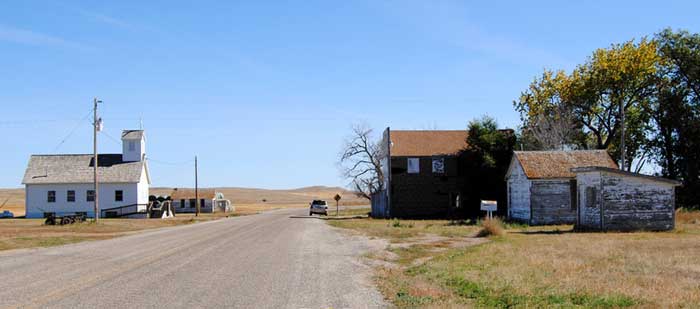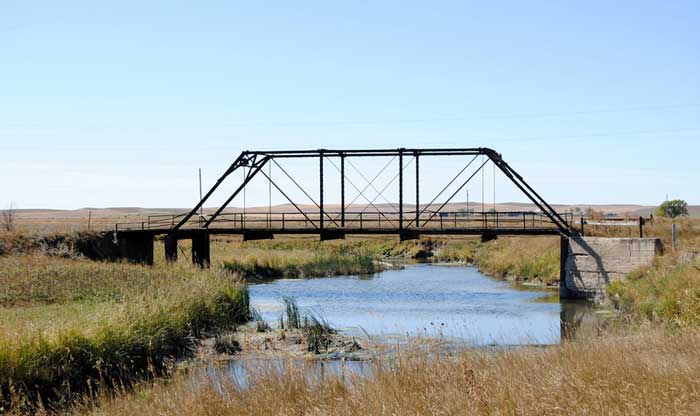
Whispers on the Wind: America’s Enduring Legends, From Mythic Forests to the Quiet Plains of Haley, North Dakota
America is a young nation, yet its soil is rich with stories, a tapestry woven from the whispers of ancient peoples, the robust boasts of frontiersmen, the chilling tales told around campfires, and the persistent mysteries that cling to its vast, diverse landscapes. These legends, far from being mere flights of fancy, are the sinews of a collective consciousness, reflecting our hopes, fears, values, and the very spirit of exploration that has defined this continent. From the towering cryptids of the Pacific Northwest to the spectral figures said to roam forgotten battlefields, American legends offer a compelling narrative, even reaching into the quiet, resilient heart of places like Haley, North Dakota.
At its core, the American legend is often a response to the unknown – a way to explain the unexplainable, to personify the forces of nature, or to immortalize extraordinary deeds. They are the echoes of a land once wild and untamed, a canvas onto which generations have projected their triumphs and their anxieties.
The Giants Who Tamed a Continent: Tall Tales and the Spirit of Expansion

Perhaps the most quintessential American legends are the "tall tales" – hyperbolic narratives born from the necessity of conquering a vast and often hostile wilderness. These stories, often humorous and exaggerated, served not only to entertain but also to instill a sense of pride and possibility in a young nation stretching its boundaries.
Consider Paul Bunyan, the colossal lumberjack whose every step carved out valleys and whose blue ox, Babe, could pull entire forests. Bunyan is more than just a character; he’s an embodiment of Manifest Destiny, a symbol of human ingenuity and strength against the seemingly insurmountable forces of nature. His legend, born in the logging camps of the Great Lakes, spoke to the very act of taming the wild, of transforming raw wilderness into resources. "Paul Bunyan didn’t just cut down trees; he shaped the landscape," notes folklorist Richard Dorson. "He was the ultimate frontiersman, a larger-than-life figure for a larger-than-life country."
Similarly, Pecos Bill, the cowboy who rode a cyclone and used a rattlesnake as a lasso, epitomizes the grit and self-reliance of the American West. Johnny Appleseed, the gentle wanderer who planted apple trees across the Midwest, represents the hopeful spirit of cultivation and settlement. These figures, though mythical, provided a cultural blueprint for the pioneering spirit, suggesting that with enough courage and determination, anything was possible. They transformed the daunting challenges of frontier life into epic sagas, teaching resilience through laughter and awe.
Ancient Voices: Indigenous Legends and the Land’s Deep Memory
Long before European settlers brought their own tales, the Indigenous peoples of America had woven intricate tapestries of legends, deeply intertwined with the land they inhabited for millennia. These stories are not just entertainment; they are spiritual guides, historical records, and moral lessons passed down through generations.
The Thunderbird, a powerful spirit-bird whose wings create thunder and eyes flash lightning, is a common motif across many Native American cultures, from the Great Plains to the Pacific Northwest. It often symbolizes power, protection, and the forces of nature. The Thunderbird’s presence can be a harbinger of change, a guardian, or a powerful spiritual entity that connects the heavens and the earth.
More chilling are legends like the Wendigo, a malevolent spirit or monster from the folklore of the Algonquian peoples, particularly prominent in the Great Lakes region and Canadian forests. Described as a gaunt, emaciated creature with insatiable hunger, the Wendigo legend often served as a warning against gluttony, selfishness, and the dangers of starvation, particularly cannibalism, in harsh winter environments. It embodies the ultimate transgression against community and nature, a creature born of human desperation twisted into monstrous form.
These Indigenous legends offer a profound connection to place, often describing the formation of mountains, rivers, and unique geological features. They teach respect for the environment and the delicate balance of life, a stark contrast to the often human-centric narratives of the tall tales. For many Native American communities, these stories are living histories, reminders of their ancestors and their enduring relationship with the land.

The Unseen and Unexplained: Cryptids, Ghosts, and Urban Whispers
As America grew and modernized, so too did its legends. The vast, unexplored corners of the continent gave rise to tales of cryptids – creatures whose existence is unproven but widely reported.
Bigfoot, or Sasquatch, is arguably the most famous. This ape-like hominid, said to roam the forests of the Pacific Northwest and beyond, is a modern wilderness legend. Thousands of sightings, blurry photographs, and anecdotal accounts fuel its enduring appeal. Bigfoot embodies the lingering mystery of the wild, the idea that even in a thoroughly mapped world, there are still secrets hidden just beyond our reach. "Bigfoot represents our desire for the unknown," says cryptozoologist Loren Coleman. "It’s a modern myth that speaks to the wildness still within us."
Further east, the Mothman of Point Pleasant, West Virginia, offers a different kind of mystery. In the mid-1960s, a winged, red-eyed creature was reportedly seen by numerous residents, culminating in the tragic collapse of the Silver Bridge in 1967. The Mothman legend is a chilling blend of creature feature and ominous premonition, a tale that intertwines the supernatural with historical tragedy, suggesting a dark herald of disaster.
Then there are the legions of ghost stories: spectral soldiers haunting Gettysburg, the phantom lights of the Marfa Desert, the sorrowful wails of La Llorona in the American Southwest. These legends are often tied to specific historical events or tragedies, imbuing locations with a sense of lingering past. They speak to our fascination with death, the afterlife, and the idea that some human emotions are so powerful they can transcend the physical realm.
Haley, North Dakota: Where Legends Reside in Quiet Resilience
While some legends dominate national discourse, many more thrive in the quiet corners of America, in small towns and rural communities where history is deeply felt and stories are passed down with reverence. It is here, in places like Haley, North Dakota, that the broader sweep of American legend finds its grounding.
Haley, a sparsely populated census-designated place in Pembina County, North Dakota, might not boast a famous cryptid or a widely known spectral resident. It’s a place defined by its vast skies, fertile plains, and the enduring spirit of its inhabitants. Yet, even in such a seemingly ordinary locale, the currents of legend flow.
In communities like Haley, the legends are often more personal, more immediate. They might be the tale of a particularly harsh winter that tested the limits of human endurance, recounted with the weight of generations. They could be the local ghost story, perhaps a pioneer woman still searching for her lost child, or a spectral farmer riding his fields at night, a testament to a life lived fully and intertwined with the land. These aren’t just spooky stories; they are mnemonic devices, ways to remember history, to connect with ancestors, and to understand the deep-seated character of a place.
The plains around Haley, with their sweeping vistas and dramatic weather, inherently invite storytelling. The isolation can foster a keen observation of nature, where a strange light on the horizon or an unusual animal call can quickly morph into a local mystery. The resilience required to live in a place of extreme seasons breeds a certain gravitas, a respect for the forces beyond human control – the very wellspring of many legends.
Haley, therefore, stands as a microcosm of America’s legendary landscape. It is a place where the tales of giants and spirits from across the nation resonate, not as distant myths, but as reflections of a shared American experience. The determination of its early settlers mirrors the tenacity of Pecos Bill. The respect for the land, a necessity for survival, echoes the wisdom of Indigenous narratives. The quiet mysteries of its history – abandoned homesteads, forgotten graves, the vastness of the prairie at night – are fertile ground for the whispers of the unseen.
The Enduring Power of Story
American legends, whether they hail from mythical forests or are whispered in the heartland, are more than just old tales. They are vital components of our national identity, continuously evolving, adapting, and finding new life in the digital age. They are shared cultural touchstones that bridge divides, connect us to our past, and help us navigate an uncertain future.
From the mighty deeds of Paul Bunyan to the cautionary whispers of the Wendigo, from the elusive shadow of Bigfoot to the quiet, personal histories that shape a place like Haley, North Dakota, these legends remind us that America is a land of endless stories. They teach us about our origins, our fears, our dreams, and the enduring human need to make sense of the world, one compelling narrative at a time. As long as there are people to tell them, and ears to listen, the legends of America will continue to echo across its vast and vibrant landscape.


